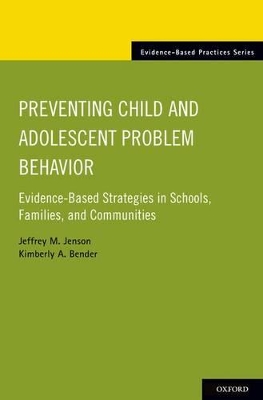Evidence-Based Practices
1 total work
Preventing Child and Adolescent Problem Behavior
by Jeffrey M. Jenson and Kimberly A. Bender
Published 30 January 2014
Children and youth face enormous developmental challenges in American society. At no time in the country's history have young people been confronted simultaneously by such a wide array of positive and negative influences and opportunities. Fortunately, most adolescents become healthy adults who participate in positive life activities. For some young people, however, the path to successful adulthood is characterized by involvement in problem behaviors like substance abuse, delinquency, violence, or school dropout. Prevention has been heralded as an effective way to reduce the adverse effects associated with childhood and adolescent problem behavior. Bolstered by evidence indicating that empirically-based programs can prevent or delay the onset of child and adolescent problems, many schools and communities have strengthened their commitment to prevention programming. Yet efforts to identify and disseminate evidence-based school, family, and community prevention strategies are lacking. In this book, we trace the rationale, history, and evolution of prevention in the United States. Empirical evidence pertaining to the prevention of common child and adolescent problems is identified and systematically reviewed. A public health framework based on concepts of risk and protection is used as a theoretical guide to inform our review and discussion. Common characteristics of evidence-based prevention programs are identified. Program Implementation, fidelity, and adaptation challenges are discussed. Practice, policy, and educational recommendations aimed at advancing prevention are noted.
